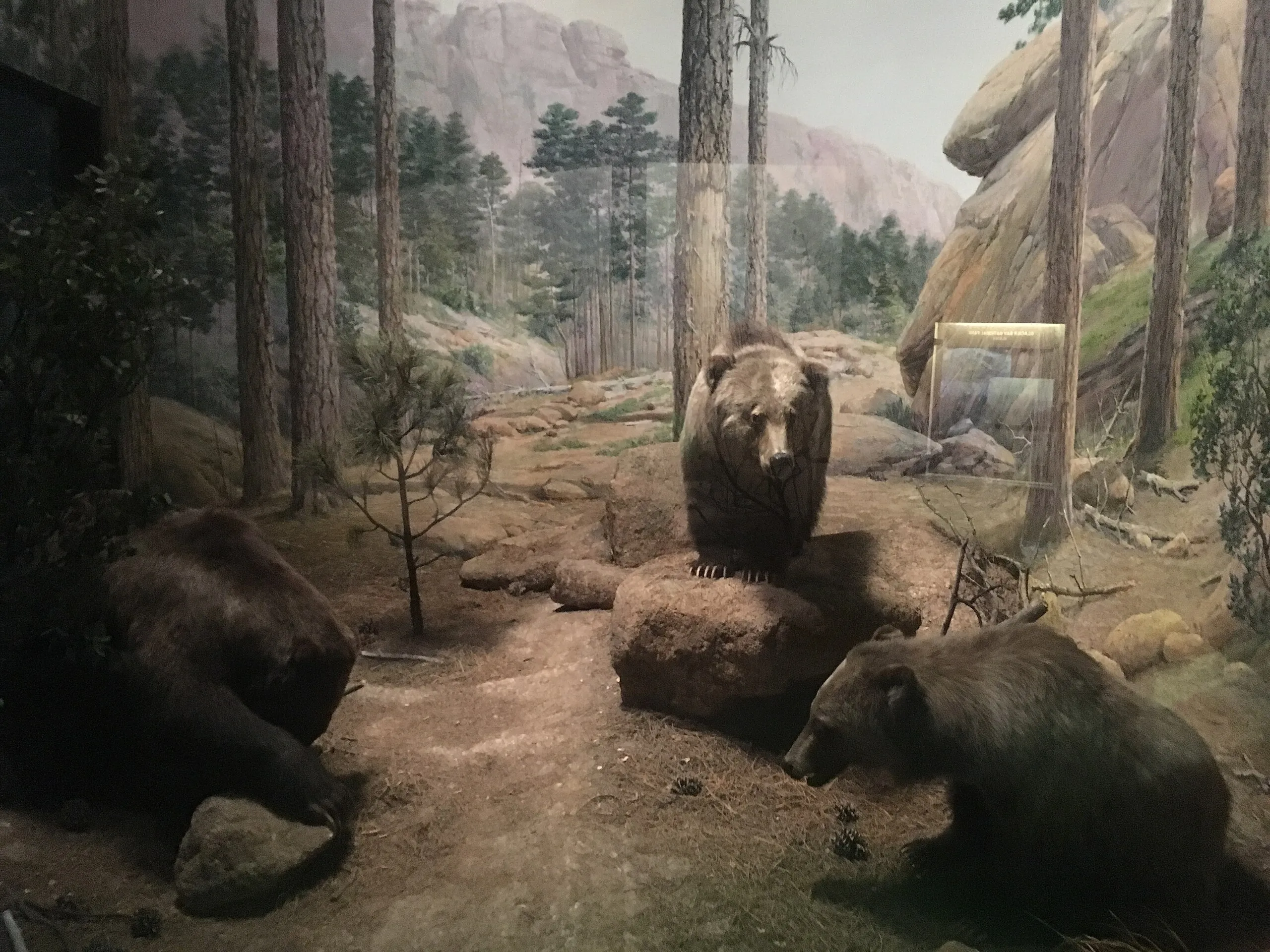
Mexican Grizzly Bear
Mexican Grizzly Bear
Mexican Grizzly Bear
The Mexican grizzly bear, a majestic creature that once roamed the mountainous regions of northern Mexico and the southwestern United States. These bears, a subspecies of grizzly bear, commanded awe with their powerful presence. However, they vanished from the Earth in the mid-20th century. Let's explore the glory and decline of the Mexican grizzly bear and the lessons they left behind.
Mexican Grizzly Bear Basic Infomation

| Property | Value |
|---|---|
| Scientific Name | Ursus arctos nelsoni |
| Taxonomic Status | SUBSPECIES |
| Rank | SUBSPECIES |
| Vernacular Names | Mexican grizzly bear |
| Kingdom | Animalia |
| Phylum | Chordata |
| Class | Mammalia |
| Order | Carnivora |
| Family | Ursidae |
| Genus | Ursus |
| Habitats | Formerly northern Mexico and the southwestern United States (before extinction) |
| Conservation Status | EXTINCT |

Size
They were about 6.5 to 9.8 feet (2 to 3 meters) long, and males weighed around 440 to 770 pounds (200 to 350 kilograms). Females were slightly smaller. They were a medium-sized subspecies of grizzly bear with a powerful build.

Lifespan
Their lifespan in the wild is estimated to have been about 20 to 25 years.

Distribution
They were once widely distributed in northern Mexico and the southwestern United States (southern California, Arizona, and New Mexico). They lived in various habitats, including mountains, forests, and grasslands. However, they went extinct in 1964.
Mexican Grizzly Bear Q&A

What kind of bear was the Mexican grizzly bear?
The Mexican grizzly bear was a subspecies of grizzly bear that once roamed northern Mexico and the southwestern United States.
They are believed to be descendants of grizzly bears that expanded their range into the Americas. Their range overlapped with that of the California grizzly bear in the southwestern United States. They had brown to golden-brown fur and a robust physique. They were omnivores, eating fruits, nuts, insects, fish, and sometimes even small mammals, thriving in the diverse natural environments. However, their numbers declined sharply in the late 19th and mid-20th centuries due to overhunting and habitat destruction by settlers, and they went extinct in 1964.

Why did the Mexican grizzly bear go extinct?
The extinction of the Mexican grizzly bear is primarily attributed to human activities.
In the late 19th and mid-20th centuries, as the American West expanded, many settlers moved into the Southwest, which was the Mexican grizzly bear's habitat. Settlers cleared land for farms and ranches, and grazed livestock. The Mexican grizzly bear was then targeted and eradicated as a pest for preying on livestock. The government offered bounties for killing grizzlies, and many bears were killed by humans. Furthermore, their forest habitat was logged for timber, resulting in habitat loss. These combined factors led to the extinction of the Mexican grizzly bear in 1964.

[Quiz!] What did Mexican grizzly bears eat?
Mexican grizzly bears were omnivores, eating fruits, nuts, insects, and sometimes small mammals.
They adapted their diet to the changing seasons, taking advantage of the bounty of nature. In the fall, they would eat a lot of acorns and pine nuts to store fat in preparation for hibernation. They were also fond of honey.

[Quiz!] Is it possible to bring back the Mexican grizzly bear?
While the Mexican grizzly bear is extinct, research in recent years has focused on resurrecting extinct animals using biotechnology.
The Mexican grizzly bear is considered a potential candidate for such efforts. If they could be brought back, it would be a significant step for biodiversity conservation. However, resurrecting extinct animals poses various challenges, including ethical considerations and the potential impact on ecosystems. Therefore, careful consideration and discussion are needed. Also, to bring back the Mexican grizzly bear, their habitat would need to be restored. Urbanization has progressed in northern Mexico and the southwestern United States, and their natural habitat of forests and grasslands has significantly shrunk. Therefore, large-scale reforestation and habitat restoration efforts would be required for the revival of the Mexican grizzly bear.

Would you like to become a part of the 'Animalbook.jp'?
Turn your knowledge into Q&A and share it with the world. ※Publication will be activated after purchase. Let's share information together!
Mexican Grizzly Bear Type of List

Causes of the Mexican Grizzly Bear's Extinction
- Habitat destruction: Conversion of land to farms and ranches, urbanization
- Extermination as pests: Attacks on livestock
- Sport hunting: Demand for trophies
- Overhunting: For their fur, meat, and fat
Information
Congratulations! You are the first commenter!

Create Your Favorite List!
Mexican Grizzly Bear
Save the animals you love! Build your own list to quickly revisit your favorites later.

Would you like to leave a comment?
※Please note: This is for the purchase of rights to post comments within the article.
Find Your Favorites!
Our shop offers a unique and attractive selection of goods themed around various animals.
Mexican Grizzly Bear References
Mexican Grizzly Bear Introduction of media used

From Wikipedia, the free encyclopedia

Mills, Enos Abijah, 1870-1922, Public domain, via Wikimedia Commons

Help Enrich Our Animalbook.jp with Your Media!
We are constantly looking to expand and enrich our Animalbook.jp with amazing photos and videos of animals. If you have any media that you'd like to share, please contribute and help us showcase the beauty and diversity of the animal kingdom. Your submissions will be credited and featured in our encyclopedia, reaching a wide audience of animal lovers.


















